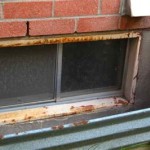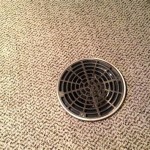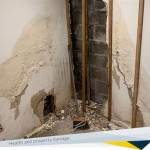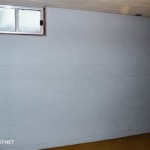How To Get Rid Of Damp Smell In Basement
Basements, often located underground, are inherently susceptible to moisture problems. This susceptibility can lead to the development of a characteristic damp smell, indicative of mold and mildew growth. This odor is not merely unpleasant; it can also signal underlying structural issues and potential health hazards. Addressing the damp smell in a basement requires a systematic approach focusing on identifying the source of the moisture, mitigating the problem, and preventing its recurrence. This article will explore the comprehensive strategies to eliminate the damp smell and ensure a healthier, more usable basement environment.
Identifying the Source of the Damp Smell
The first step in eliminating a damp smell is to pinpoint the source of the moisture. Without identifying the origin, any remediation efforts will only provide temporary relief. Several potential sources contribute to moisture accumulation in basements, and a thorough investigation is necessary to determine the specific culprit.
One common source is groundwater seeping through the foundation walls or floor. This seepage can occur due to hydrostatic pressure – the force exerted by water in the soil against the basement walls. Cracks, fissures, or porous concrete allow water to penetrate the structure. Look for visible signs of water stains, efflorescence (a white, powdery deposit indicating mineral leaching), or actual water puddles. Inspect areas where the foundation meets the floor (the cold joint) as this is a common entry point.
Another potential source is condensation. Warm, moist air entering the basement comes into contact with cooler surfaces, such as concrete walls or uninsulated pipes, causing water to condense. This is particularly prevalent during humid months. Insufficient ventilation exacerbates the problem by trapping moisture within the basement.
Plumbing leaks are another frequent cause of dampness. Check all visible pipes, including water supply lines, drainpipes, and sewage lines, for any signs of leaks or drips. Inspect the area around the water heater, washing machine, and any other appliances that use water. Even small, slow leaks can contribute to significant moisture buildup over time.
Surface water runoff can also infiltrate the basement if the surrounding landscaping is improperly graded. If the ground slopes towards the foundation, rainwater will naturally flow towards it. Gutters and downspouts that are clogged or improperly positioned can also direct water towards the basement walls. Examine the exterior of the house during or after rainfall to identify any areas where water is pooling or flowing towards the foundation.
Finally, capillary action can draw moisture up from the soil into the concrete foundation. This is especially problematic in basements without a proper vapor barrier beneath the concrete slab. The concrete acts like a sponge, drawing moisture upwards. This is often less obvious than other sources of moisture and requires close inspection for subtle signs of dampness near the floor.
Once the source of the moisture is identified, addressing it directly is crucial. This might involve repairing cracks in the foundation, improving ventilation, fixing plumbing leaks, upgrading the landscaping, or installing a vapor barrier.
Mitigating the Problem: Removing Moisture and Addressing Mold
After identifying and addressing the source of the moisture, the next step is to remove existing moisture and address any mold or mildew growth. This involves a combination of drying, cleaning, and disinfection.
The first priority is to dry out the basement thoroughly. This can be achieved using a combination of ventilation and dehumidification. Open windows and doors (if weather permits) to promote airflow and allow moisture to escape. Simultaneously, use a dehumidifier to actively remove moisture from the air. A dehumidifier's capacity should be appropriate for the size of the basement and the level of humidity. Continuous operation is often necessary, especially initially, until the humidity level is significantly reduced.
If there has been substantial water damage, consider using fans to circulate air and speed up the drying process. Position fans strategically to direct airflow over damp surfaces. Avoid using heat sources, such as space heaters, as these can create a humid environment that promotes mold growth.
Once the basement is dry, address any visible mold or mildew growth. Mold requires moisture and organic material to thrive, so eliminating the moisture source is paramount. For small areas of mold growth (less than 10 square feet), you can typically clean it yourself using a mold-killing solution. Wear appropriate protective gear, including gloves, a mask, and eye protection, to avoid inhaling spores. Scrub the affected area thoroughly with the solution and allow it to dry completely.
For larger areas of mold growth (more than 10 square feet), professional mold remediation is recommended. Professionals have the expertise and equipment to safely and effectively remove mold and prevent its recurrence. They can also identify and address any hidden mold growth within walls or ceilings.
After cleaning or remediating mold, consider applying a mold-resistant paint or sealant to the surfaces to prevent future growth. Ensure that the paint is specifically designed for use in damp environments. This provides an additional layer of protection against moisture and mold.
Dispose of any water-damaged materials, such as carpets, drywall, or furniture, that cannot be adequately cleaned or salvaged. These materials can harbor mold and continue to contribute to the damp smell. If possible, replace these materials with mold-resistant alternatives.
Preventing Recurrence: Long-Term Solutions
Eliminating the damp smell is only half the battle; preventing its recurrence is equally important. Implementing long-term solutions that address the underlying causes of moisture problems is crucial for maintaining a dry and healthy basement.
Improving ventilation is essential. Install exhaust fans in the basement to remove humid air and promote air circulation. Consider installing a dehumidifying ventilation system that automatically regulates humidity levels. Ensure that air vents and windows are not blocked by furniture or other obstructions.
Proper insulation can help to prevent condensation. Insulate basement walls and pipes to reduce temperature differences and minimize condensation. Use closed-cell foam insulation, which is resistant to moisture absorption. Sealing cracks and gaps in the foundation walls can also help to prevent moisture from entering the basement.
A vapor barrier is a crucial component of a moisture control system. If your basement floor does not have a vapor barrier beneath the concrete slab, consider installing one. This involves covering the floor with a polyethylene sheet before pouring a new concrete slab or installing a finished floor. A vapor barrier prevents moisture from rising through the concrete and contributing to dampness.
Ensure proper grading around the foundation. The ground should slope away from the house to direct water away from the foundation walls. Extend downspouts away from the foundation to prevent water from pooling near the basement. Cleaning gutters regularly is essential to prevent clogs and ensure proper drainage.
Evaluate the effectiveness of your existing waterproofing system. If you have a sump pump, ensure that it is functioning properly and has sufficient capacity to handle the water flow. If you do not have a sump pump, consider installing one to remove groundwater that may be accumulating around the foundation. Investigate the effectiveness of any exterior waterproofing measures, such as drainage systems or foundation coatings, and make repairs or improvements as needed. Regular inspections of these systems are important.
Monitor humidity levels regularly. Use a hygrometer to measure humidity levels in the basement. Aim to maintain a humidity level below 50% to prevent mold growth. If humidity levels are consistently high, investigate the cause and take corrective action.
Routine inspections are also important. Conduct regular inspections of the basement for any signs of dampness, water leaks, or mold growth. Address any issues promptly to prevent them from escalating. Early detection and intervention can save time, money, and prevent further damage. By implementing these long-term solutions, you can significantly reduce the risk of moisture problems and maintain a dry, healthy, and odor-free basement.

How To Get Rid Of Mold And Mildew Smell In Your Basement Aircare

Eliminate Musty Smell In Basement Homesteading Simple Self Sufficient Off The Grid Com

How To Get Rid Of Musty Smell In Basement Wet Basements

Musty Smell In The Basement 4 Steps To Freshness Bob Vila

Get Rid Of Musty Odor In Basement Servicemaster Restore

How To Get Rid Of Basement Odor 10 Easy Methods

8 Steps To Get Rid Of Musty Basement Smells Baker S Waterproofing

Moldy Odor In Basement How To Handle

How To Get Rid Of Musty Smell In Basement Keep Away

How To Get Rid Of Basement Odor And Why It Smells In The First Place
Related Posts







